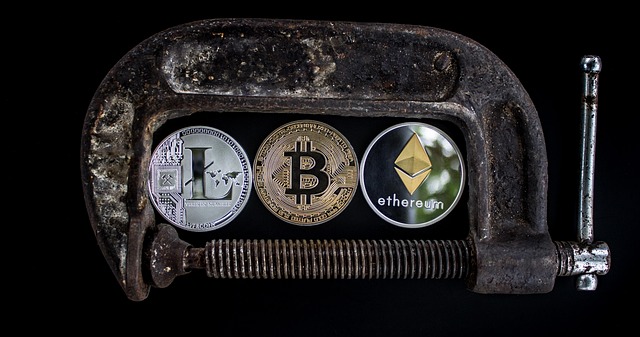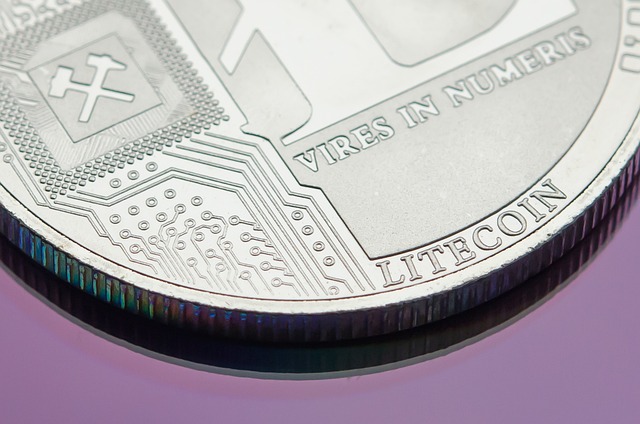Litecoin's unique, inclusive governance model leverages decentralized decision-making via its native Lightning Network token, enabling democratic participation from every LTC holder. Led by the Litecoin Foundation, this system fosters transparency and community consensus through on-chain voting platforms and annual summits. Mining and staking are crucial for network security and decision-making balance. While challenges include keeping pace with technological evolution, implementing DAO structures and innovative voting mechanisms like proof of stake or reputation systems could further democratize Litecoin governance, enhancing community engagement and aligning decisions with the collective will.
Litecoin, a prominent cryptocurrency, has pioneered community-driven governance models within its ecosystem. This article explores the intricate decision-making processes that shape Litecoin’s future. From understanding the unique community governance model to examining the roles of mining and staking, we delve into how these mechanisms impact decentralization. Furthermore, we analyze challenges and discuss promising prospects for Litecoin’s ongoing evolution, providing insights into the effective governance of this digital currency.
- Understanding Litecoin's Community Governance Model
- Key Decision-Making Processes in Litecoin
- The Role of Mining and Staking in Governance
- Impact of Governance on Litecoin's Decentralization
- Challenges and Future Prospects of Litecoin Governance
Understanding Litecoin's Community Governance Model

Litecoin, like many other cryptocurrencies, operates on a decentralized community governance model that empowers its users. This model is driven by an open and transparent decision-making process where every holder of Litecoin (LTC) has a say in shaping the project’s future. The core principles revolve around community consensus, ensuring that changes and updates are made collectively.
This unique governance structure allows for democratic participation via on-chain voting systems. When proposals related to protocol upgrades, new features, or funding allocations arise, LTC holders can cast their votes using wallets compatible with Litecoin’s native governance token, Lightning Network (LN). This process facilitates a direct democracy, reflecting the community’s collective will and fostering a strong sense of ownership among participants.
Key Decision-Making Processes in Litecoin

Litecoin, as a decentralized cryptocurrency, relies on a robust community governance model for decision-making processes. The core of this system is the Litecoin Foundation, a non-profit organization that facilitates communication and coordination among developers, users, and other stakeholders. One key process involves proposing and voting on changes to the protocol through various channels like GitHub or official discussion forums. This ensures transparency and inclusivity, allowing all community members to contribute their ideas.
Another crucial aspect is the annual Litecoin Summit, where core team members, developers, and enthusiasts gather to discuss and decide on significant updates and improvements. These events foster open dialogue, enabling collective problem-solving and strategic planning for the future of Litecoin. The combination of these direct democracy principles and collaborative forums drives the litecoin network’s evolution, shaping its features and direction through community consensus.
The Role of Mining and Staking in Governance

In Litecoin’s community governance, mining and staking play pivotal roles in shaping decision-making processes. Miners and stakers are the backbone of the network’s security and operations, ensuring transactions are verified and validated. Their collective efforts directly influence the direction and evolution of the Litecoin ecosystem.
Through the process of mining, participants compete to solve complex mathematical puzzles, adding new blocks to the blockchain. This not only secures the network but also determines the release schedule of new Litecoins into circulation. Similarly, staking involves holding a certain amount of Litecoin as a pledge, enabling validators to participate in consensus mechanisms and earn rewards. These activities foster a balanced and decentralized governance model, where power is distributed among various participants, ensuring that Litecoin’s development remains community-driven and responsive to its users’ needs.
Impact of Governance on Litecoin's Decentralization

The governance structure in Litecoin plays a pivotal role in maintaining and enhancing its decentralization. Decentralization is a core principle for cryptocurrencies, ensuring no single entity controls the network. In the case of Litecoin, community governance allows decisions to be made collectively by the users, developers, and stakeholders. This democratic approach fosters transparency and ensures that any changes or upgrades are aligned with the collective vision of the Litecoin ecosystem.
Effective governance processes empower the Litecoin community to make informed choices, adapt to evolving market needs, and secure the network’s long-term sustainability. By involving a diverse range of participants, Litecoin’s decentralized nature is preserved, allowing for a robust and resilient cryptocurrency that has stood the test of time in a rapidly changing digital landscape.
Challenges and Future Prospects of Litecoin Governance

Litecoin’s governance faces challenges in keeping up with its rapidly evolving ecosystem and the ever-changing digital landscape. One significant hurdle is the complex nature of blockchain technology, which requires a deep understanding from participants to make informed decisions. As Litecoin continues to grow, there’s a pressing need for more accessible and inclusive governance models that can engage a diverse range of holders and enthusiasts.
Looking ahead, the future of Litecoin governance holds promising prospects. Implementing decentralized autonomous organization (DAO) structures could democratize decision-making, allowing token holders to participate directly in network upgrades and policy changes. Embracing innovative voting mechanisms, such as those based on proof of stake or reputation systems, can enhance participation and ensure that decisions reflect the collective will of the Litecoin community.
Litecoin’s community governance model, characterized by inclusive decision-making processes, has significantly shaped its development. From understanding the unique roles of mining and staking to navigating challenges in decentralization, Litecoin offers a compelling example of how decentralized networks can foster effective governance. As the crypto landscape evolves, Litecoin’s approach continues to inspire and inform, highlighting the power of community-driven decisions in creating a sustainable and robust digital currency ecosystem. This comprehensive exploration underscores the centrality of community governance in the ongoing success and future prospects of Litecoin.







Leave a Reply